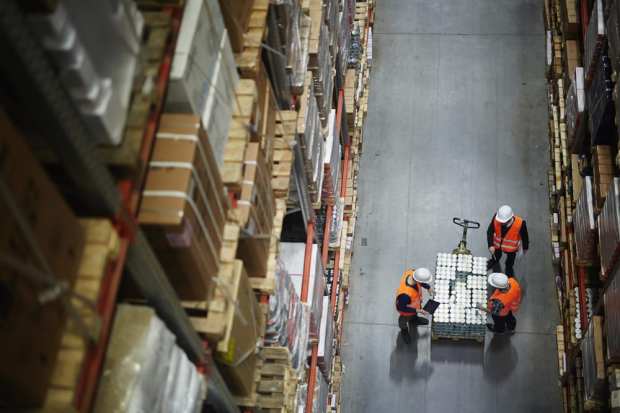Ushering In A New Era Of Intelligent Warehousing

The current economy is placing unprecedented pressure on the warehouse. Be it the surging volumes of eCommerce in both the B2C and the B2B arenas, or the increasingly popular business model shift toward direct-to-consumer, supply chain strategies are in flux, and the position of the warehouse as pivotal to fulfilling orders and keeping products moving has become even more crucial.
For several years, the rise of Industry 4.0 has sparked conversations over how sophisticated supply chain technologies like the Internet of Things, voice commands and artificial intelligence bots can drive efficiencies in the warehouse. But shifting toward these often complex tools is no picnic, and adoption friction can prevent supply chain modernization.
This past year, however, modernization was no longer an option.
“We’re really in a world today where customers want convenience, and they want it now,” said Brandon Black, vice president and general manager, supply chain at Ivanti. “I don’t know that we ever go back from this.”
Speaking with PYMNTS, Black discussed some of the most promising tools stepping into the warehouse to strengthen companies’ top and bottom lines, and the importance of technological collaboration to optimize employee user experiences and ease adoption.
The User Experience
Across industries and warehouses, supply chain strategies often pursue the same goal: empowering professionals within those warehouses to operate at the highest level.
At a period when market pressures are at an all-time high, however, it’s no longer enough for organizations to adopt the latest, cutting-edge solutions. Rather, the tools they choose to arm their employees with must be flexible, functional and, not least of all, user-friendly.
“The importance of mobility during these times is critically important,” said Black. “You see device manufacturers out there that have stepped up their game to deliver a solid experience.”
On the front-end, that could mean the adoption of the Android operating system, which Black said allows software providers greater flexibility in how a product functions for the end-user. On the back-end, he said, device manufacturers have also accelerated their support for application programming interface (API) integrations that similarly enables software developers to quickly evolve their offerings.
Tech Collaboration
Developing optimized intelligent warehouse technologies must involve a collaborative effort across device manufacturers, software developers and industry stakeholders alike. A key portion of that strategy includes integration capability, leaving Ivanti Wavelink — Ivanti’s supply chain unit — to most recently integrate its various products with SAP NetWeaver and SAP S/4HANA.
The company is also currently in the midst of a collaboration with Deloitte that leverages Ivanti Wavelink’s integration of its Speakeasy solution within SAP, which aims to break down barriers for warehouses to implement voice-enabled applications.
As market shifts continue to add pressure to supply chains, technological collaboration will be imperative to not only develop intelligence and sophisticated warehouse solutions but to ensure professionals can more easily adopt and use those tools.
“There is going to be technology that goes into the warehouse to accelerate support of this kind of demand from the economy,” said Black. “That means bringing things together that orchestrate software and hardware with the worker. I think WMS [warehouse management systems] operations and workflows will largely stay the same, but it’s how you orchestrate and bring together the best of what’s in the warehouse today, and what device manufacturers are creating, to move product through the supply chain faster.”
Indeed, elevating warehouse operations is all about speed and accuracy today, and top performers will see significant impacts on their top and bottom lines as a result.
Today, with the pressure to modernize continuing to climb, organizations are tasked with wading through an increasingly crowded marketplace of technologies. It can be difficult to understand which tools are the right solutions, noted Black.
Yet over the next year or two, he predicted supply chains will make significant progress in their modernization and technological adoption roadmaps. In order to facilitate that evolution, technology providers must work together to design agile, flexible solutions that drive up productivity and facilitate a positive user experience.
“I think it’s going to take another 12-to-18 months,” said Black, “but what you’re going to see is more of these smarter technologies coming into the warehouse that increase the top line and bottom line.”
